This Is Japan
Explore everyday life in Japan
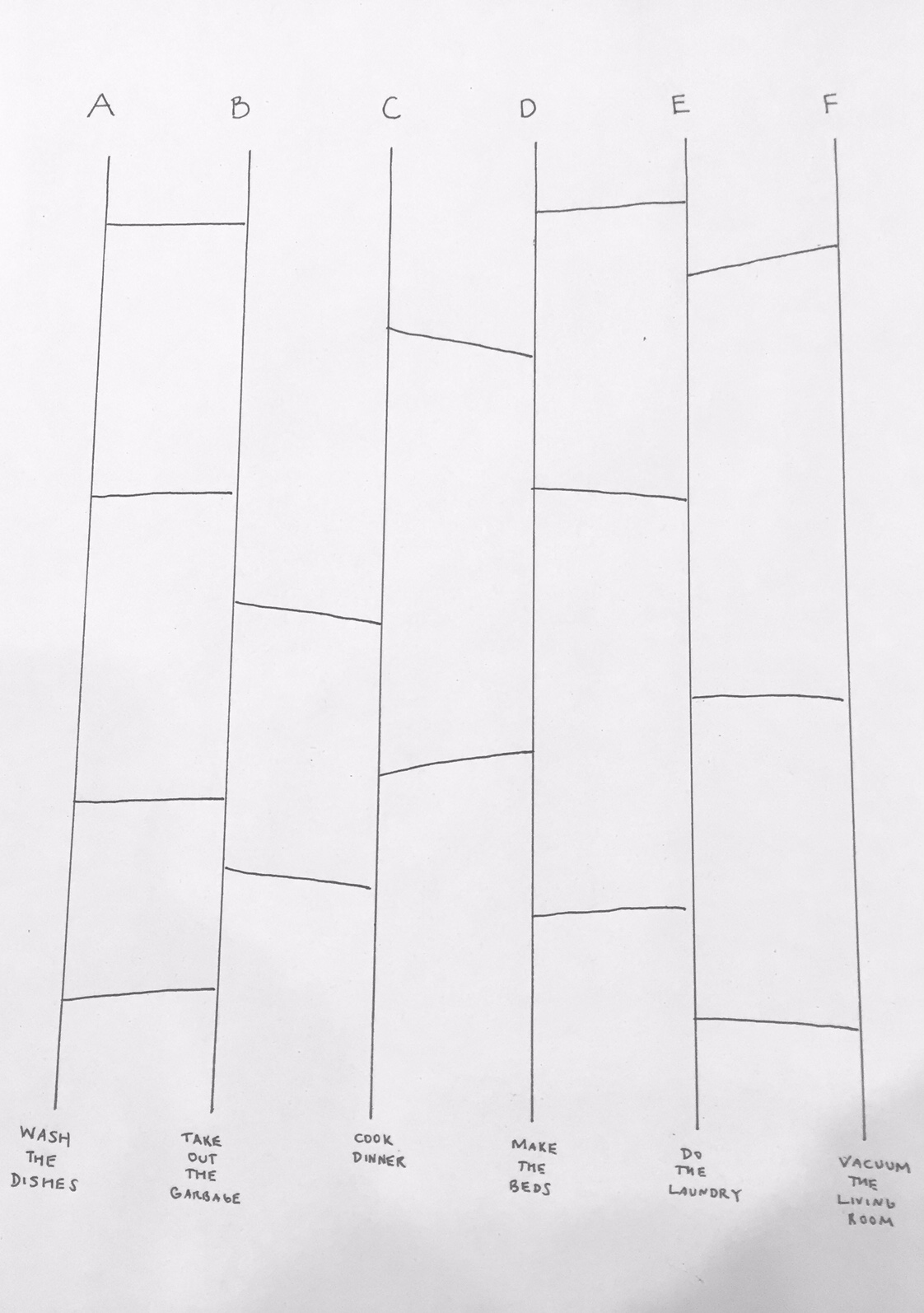
I’m sure you’ve been in this situation at least once before. You’re in a group of people and you’re all trying to make a decision but you can’t come to a consensus. Or, you’ve been tasked to do various things as a group of people but you can’t find a way to fairly dole out the responsibilities.
For example, when it comes to cleaning, who really wants to be the one who has to wash the toilet, and if you are in charge, how do you go about choosing someone to do that job?
One way to make a decision and/or dole out responsibilities in Japan is to use a lottery system known as Amidakuji. It is a great and fair way to make any kind of decision, even decisions about your own future if you so choose to leave such things up to chance.
There are a couple different ways to do Amidakuji. I will walk you through the steps of what I think is the simplest way to do one.
First, you will need to draw a series of straight lines on a piece of paper. The number of lines that you draw is significant. In the example below, there are six lines. Generally, this would mean that six people are participating in the Amidakuji and that there are six prizes, or six duties that are being distributed. However, you could do this by yourself and give yourself six options.
For example, maybe you are trying to decide where you want to go on vacation and you have narrowed your choices down to six places. At the top of each line, write a letter (as in the example below), or a number. At the bottom of each line, write a prize or a duty. If you are choosing a vacation location, you could write one location at the bottom of each line. If you are doling out household chores, you could write one chore at the bottom of each line. Or, as in the example below, you could write down prizes or penalties: Give me 50 Steem. I give you 100 Steem. Give me 10 Steem. I give you 20 Steem. Follow me. I follow you.
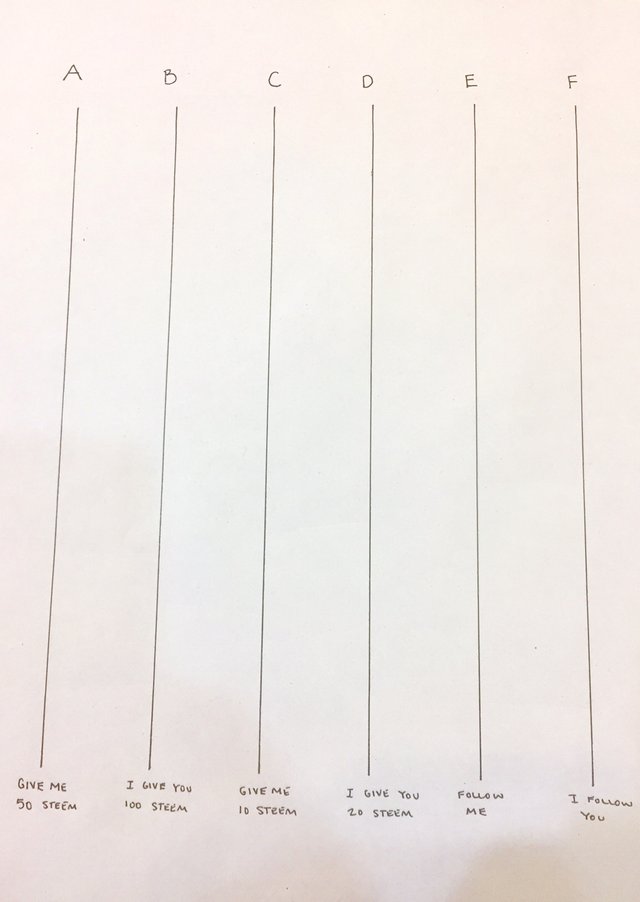
After you have written letters or numbers at the top of each line and prizes, penalties, or responsibilities/duties at the bottom of each line, I think it is a good idea to fold the bottom of the paper over so that the rewards are hidden. This step is optional and really has no effect on the outcome. However, I think that it adds a little more excitement to the final results.
Once you have folded the bottom of the paper over to hide the rewards, everyone who is participating much choose a line. If you have used letters, each person will choose a letter. If you have used numbers, each person will choose a number. If you are playing by yourself, only you will choose a letter or a number.
Then, each person participating in the Amidakuji will have a chance to draw as many horizontal lines as he/she would like between the vertical lines. These horizontal lines cannot cross, intersect, or touch. This is very important.
It is also very important that each participant chooses a vertical line before these horizontal lines are drawn, especially if the rewards are not hidden by the fold I suggest making in the bottom of the paper. If this step is not properly observed, the Amidakuji can be gamed.

When all of the horizontal lines have been drawn, each participant will follow his or her line from top to bottom. Each time he/she encounters a horizontal line, that line must be followed across the Amidakuji as has been done in the following pictures. If done correctly, each line will always lead to a different prize, penalty, or responsibility. Please look at the examples below.
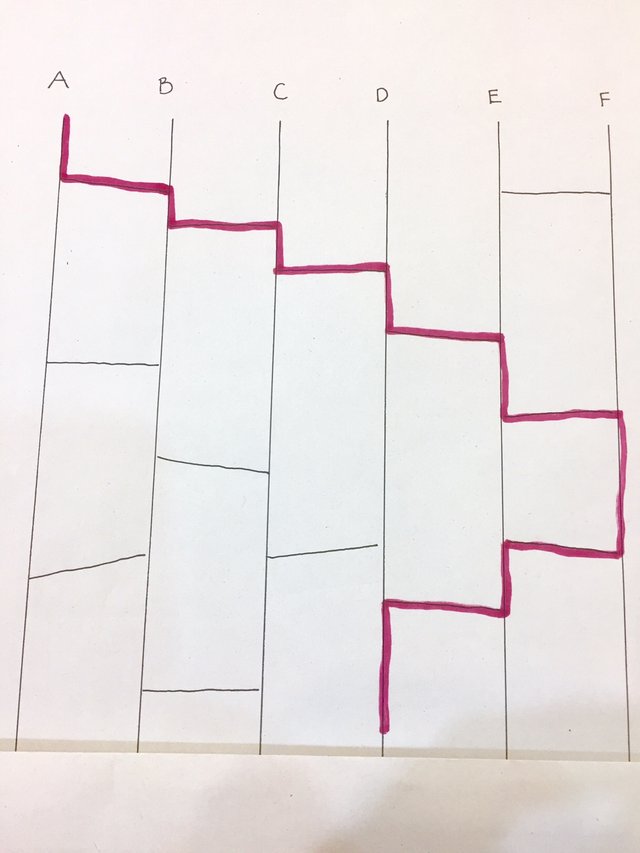
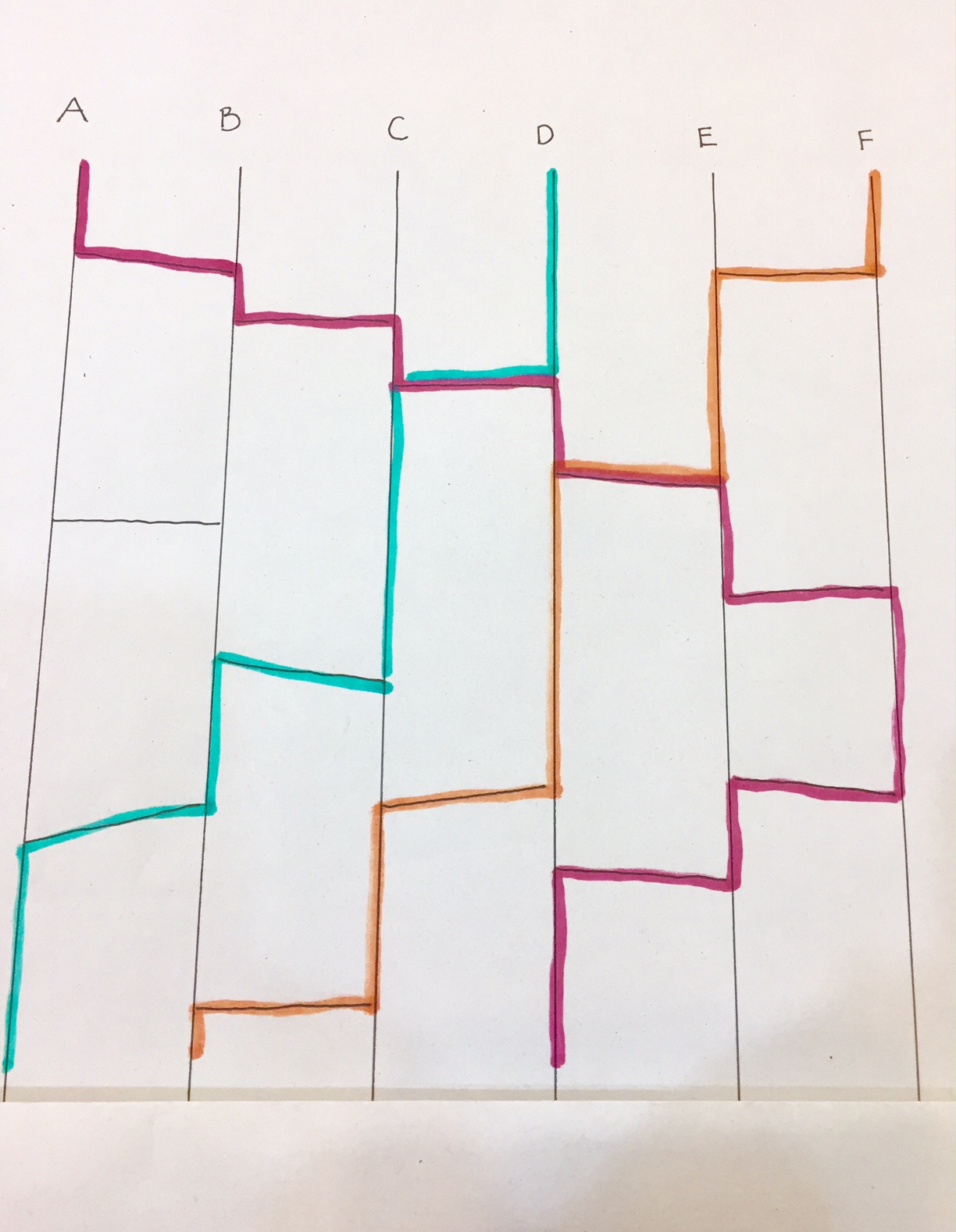
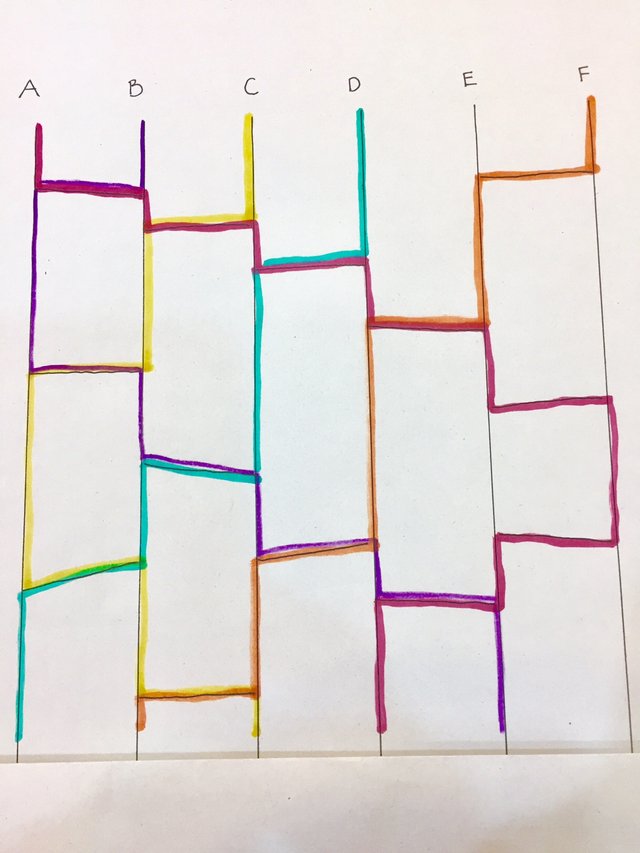
Amidakuji can be used in many ways and can be a very fun way to give out presents at a gift exchange, choose partners for a game or a project, play a drinking game, or even gamble, etc. The next time you are looking for a quick party game or find yourself fumbling over a decision to make (Which alt-coin or stock should I buy or sell?), try using an Amidakuji. Even if you don't follow the advice of this lottery system, it's still fun to do.
This is an ongoing series that will explore various aspects of daily life in Japan. My hope is that this series will not only reveal to its followers, image by image, what Japan looks like, but that it will also inform its followers about unique Japanese items and various cultural and societal practices. If you are interested in getting regular updates about life in Japan, please consider following me at @boxcarblue. If you have any questions about life in Japan, please don’t hesitate to ask. I will do my best to answer all of your questions.
Nice game!! I can imagine kids playing this and creating stories with the random results! Bookmarked! ;)
That's a brilliant idea! I had never thought of using it as a writing prompt. I'll definitely try that in some of my ESL classes. Thanks!
Glad to give useful ideas! :)
Wow this is brilliant. I am going to adopt it.
I'm glad to hear it! Let me know how it works out.
wow
Give it a try and let me know how it works.
Fascinating!
It's interesting, isn't it?
Wow... that's a really interesting approach to problem solving and delegating tasks. Thanks for sharing!
As always, thanks for reading and commenting.
Very cool! First time I'm hearing about this! :)